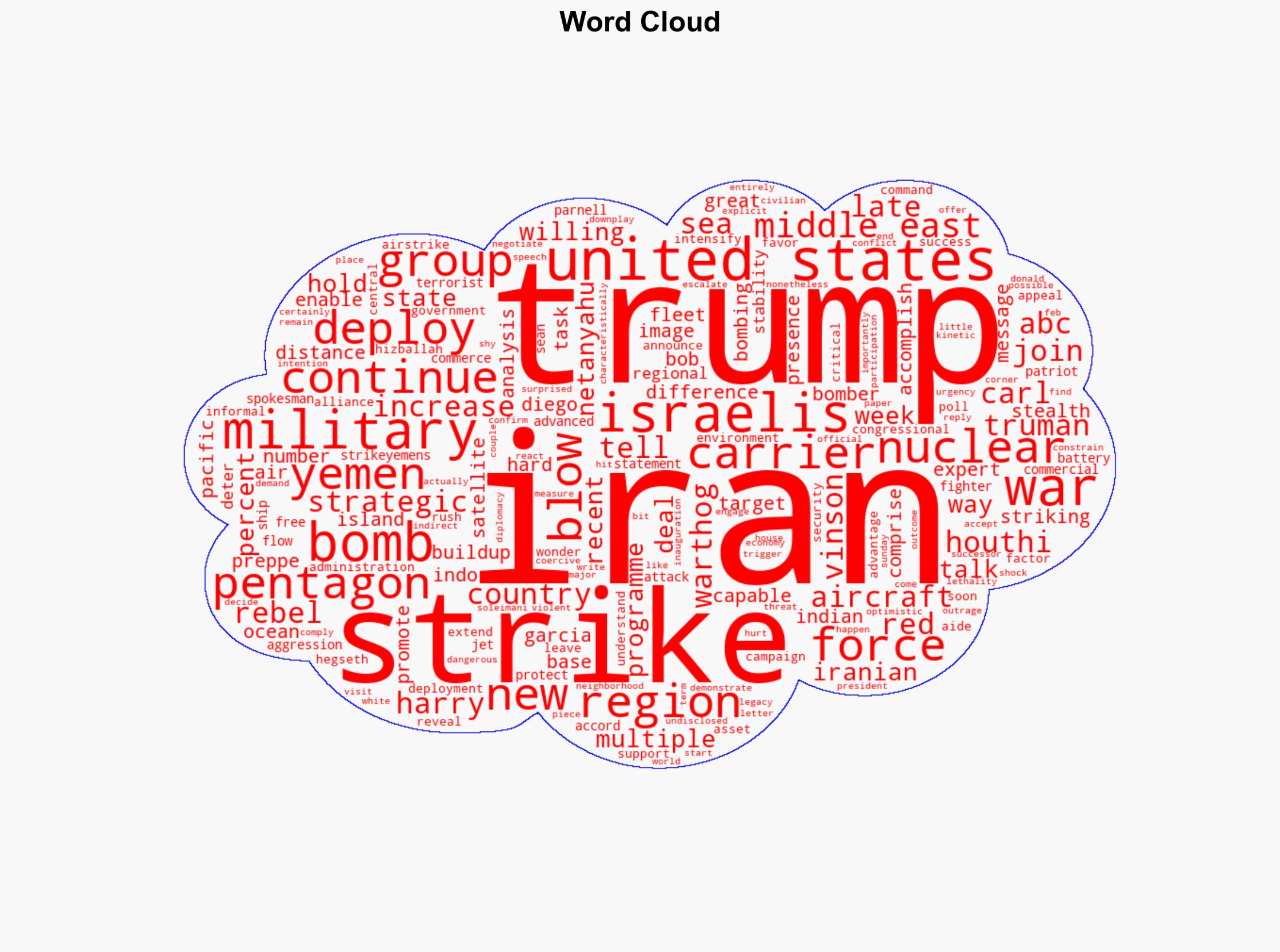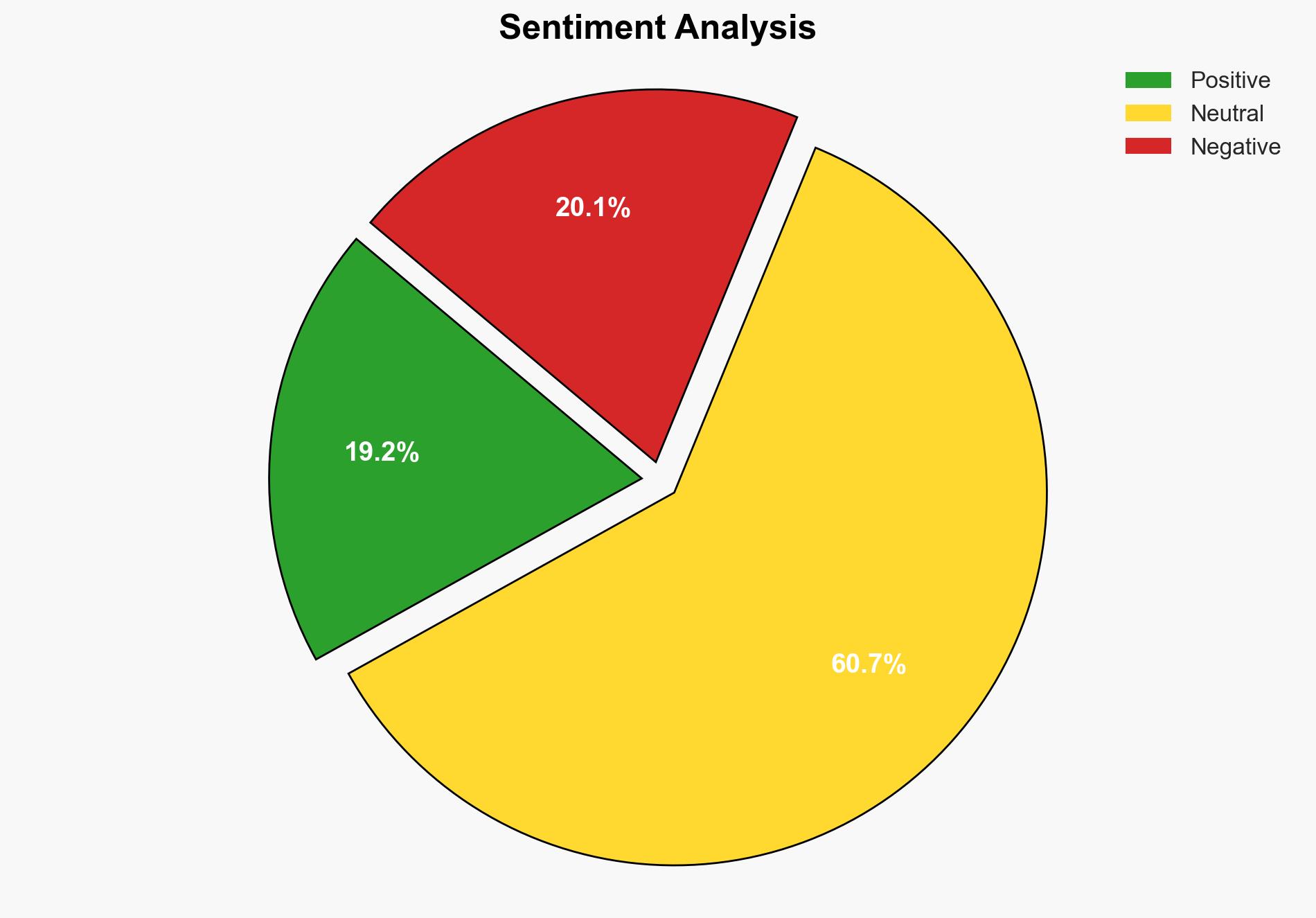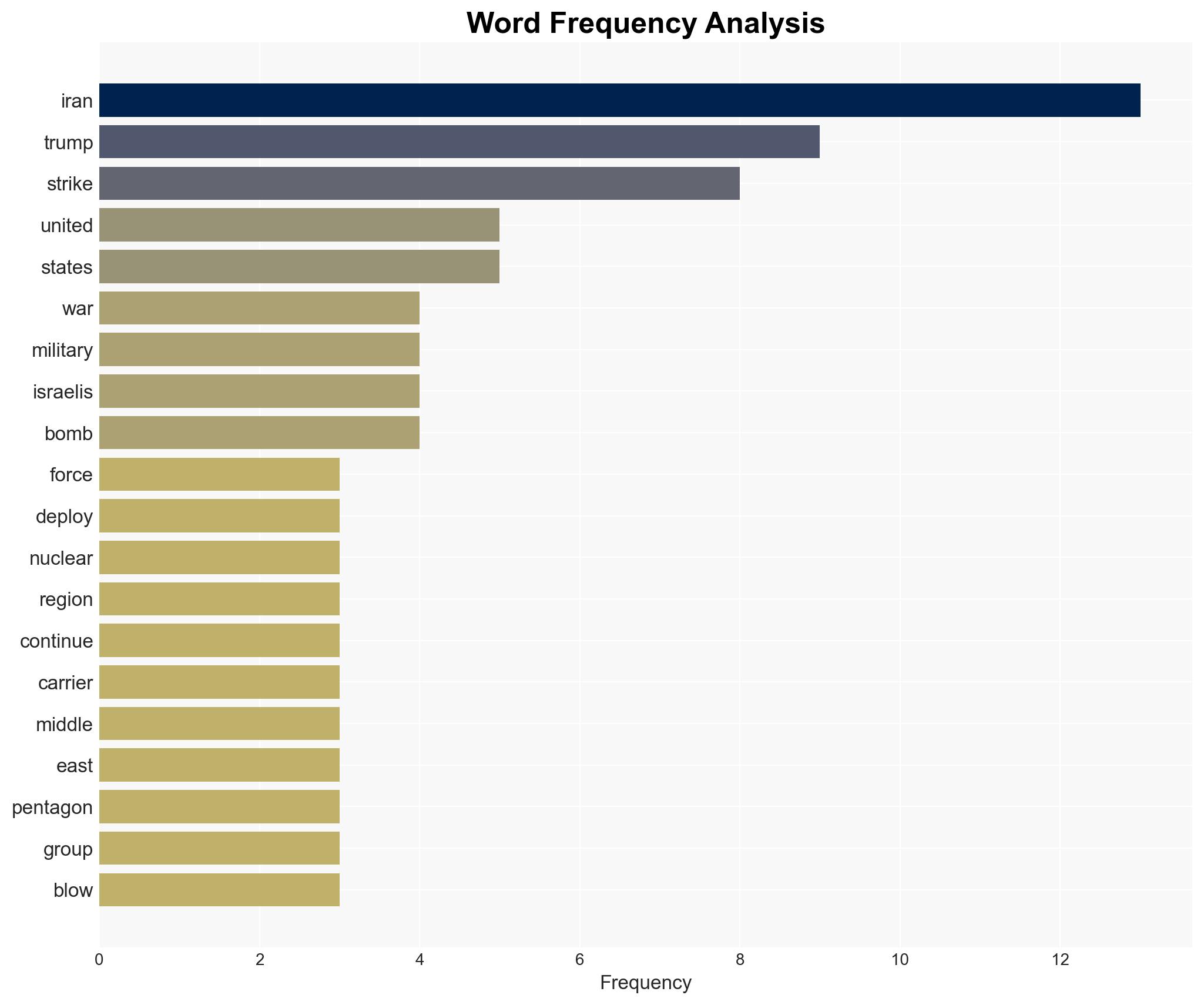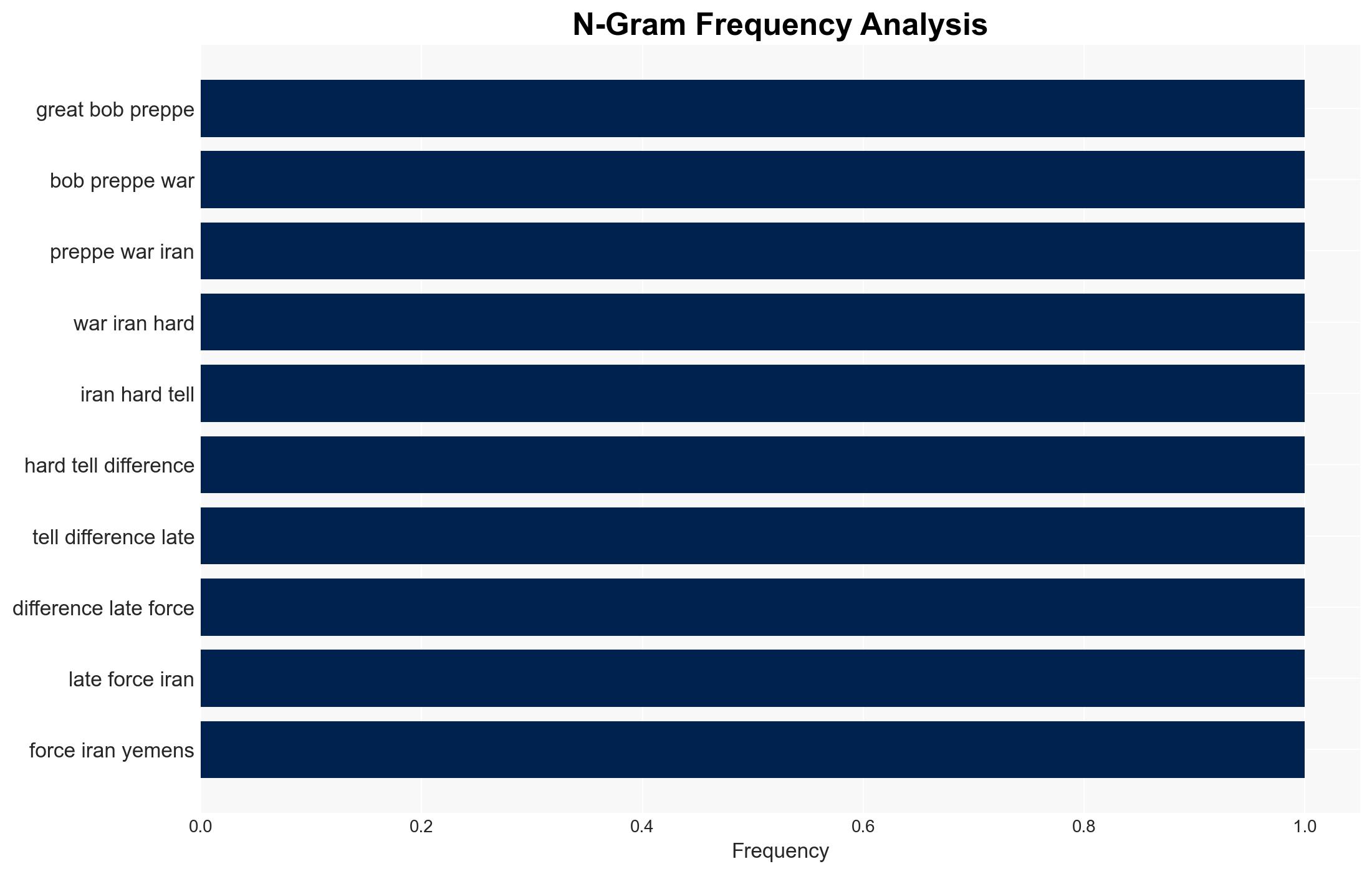Not Great Bob – Lawyersgunsmoneyblog.com
Published on: 2025-04-03
Intelligence Report: Not Great Bob – Lawyersgunsmoneyblog.com
1. BLUF (Bottom Line Up Front)
The United States has increased its military presence in the Middle East, deploying nuclear-capable bombers and aircraft carriers to the region. This strategic move aims to deter aggression from Iran and support regional stability. The deployment also seeks to counter the influence of Iran-backed Houthi rebels in Yemen. Recent polling indicates strong support among Israelis for military action against Iran, highlighting regional tensions. The situation remains volatile, with potential for escalation if diplomatic efforts fail.
2. Detailed Analysis
The following structured analytic techniques have been applied for this analysis:
General Analysis
The United States’ military buildup in the Middle East is a response to perceived threats from Iran and its proxies. Satellite imagery confirms an increase in aircraft on Diego Garcia, indicating readiness for potential strikes. The deployment of the Harry Truman and Carl Vinson carrier strike groups underscores a commitment to maintaining open sea lanes and deterring hostile actions. The Trump administration’s intensified airstrike campaign in Yemen reflects a broader strategy to weaken Iran’s regional influence. However, this aggressive posture risks further destabilizing the region and complicating diplomatic efforts.
3. Implications and Strategic Risks
The increased military presence poses significant risks to regional stability and global economic interests. Escalation could lead to direct conflict with Iran, disrupting oil shipments through the Red Sea and impacting global markets. The potential for miscalculation or unintended escalation remains high, particularly with Iran’s recent threats and military posturing. Additionally, the situation may strain U.S. relations with allies concerned about the potential for broader conflict.
4. Recommendations and Outlook
Recommendations:
- Enhance diplomatic efforts to de-escalate tensions with Iran, leveraging international partners to mediate discussions.
- Increase intelligence sharing with regional allies to improve situational awareness and coordination.
- Invest in technological advancements to bolster defensive capabilities and reduce reliance on offensive military actions.
Outlook:
Best-case scenario: Diplomatic negotiations lead to a de-escalation of tensions, with Iran agreeing to constraints on its nuclear program in exchange for sanctions relief.
Worst-case scenario: Military confrontation escalates, resulting in significant regional conflict and disruption of global oil supplies.
Most likely outcome: Continued military posturing and sporadic skirmishes, with ongoing diplomatic efforts to prevent full-scale conflict.
5. Key Individuals and Entities
The report mentions significant individuals and organizations, including great bob, m, sean parnell, hegseth, and netanyahu. The strategic actions involve entities such as the United States military, Iran, Houthi rebels, and the Trump administration.





